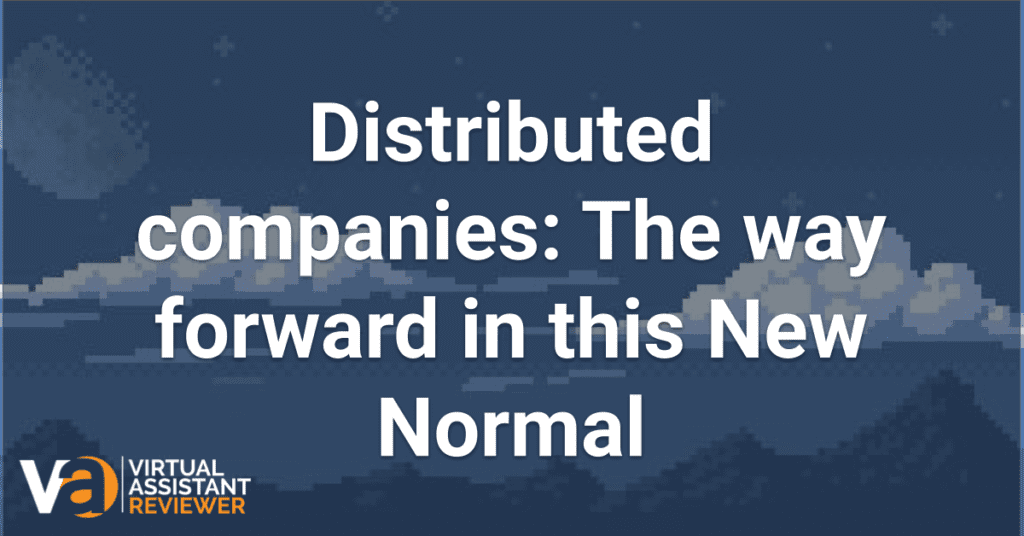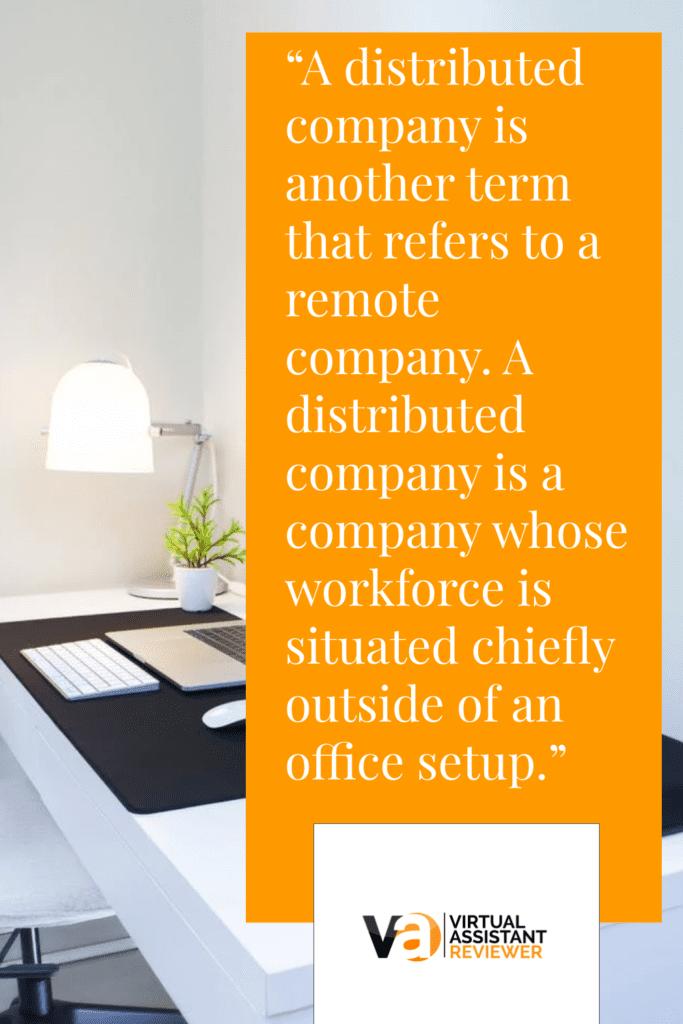
Years ago, many companies advocated for a distributive work environment as the way for the future. It was a concept then being explored by many companies, especially those in tech and software development, as a viable option to save costs sometime in the near future.
But the COVID-19 pandemic came, and it transformed the way we work and how companies operate at a much-accelerated pace.
What was previously a proposed work structure became the necessary setup due to lockdowns worldwide.
In the United States, companies like Twitter and Square started the distributive work setup. Soon after the lockdown had been lifted, they’ve announced that their workforce would no longer have to return to their offices unless they expressly wanted to. Soon, tech giants like Facebook, Google, and Apple have followed suit and are no longer enthusiastic about bringing their staff to their sprawling offices.
Given that these companies are the most innovative names in the business world, one might wonder how becoming distributed companies be beneficial in the long term and how this structure is working.
This article will discuss in-depth things you need to know about distributed companies and how to become one.
Table of Contents
What is a distributed company?
A distributed company is another term that refers to a remote company. A distributed company is a company whose workforce is situated chiefly outside of an office setup.
Its employees and staff work from anywhere in the world, remotely, and they rely on telecommunication and the internet to connect with one another.
This setup allows a company to have its workers distributed worldwide without setting up regional work segments. The operative word here is distributed, meaning human resources are distributed to multiple locations instead of being centralized in the same physical workspace or a particular geographical area.
Before the pandemic, big companies were already operating in a distributed work structure, including Mozilla and Toptal.
What are the reasons for a distributed workforce setup?
Companies have been trying to set up a distributed model in terms of their workforce and staff. IBM was one of the pioneers in adopting this model and one of the earliest to implement telecommuting until it ended the set up in 2017.
The decision of IBM to recall its workers back to the office did not stop companies from pursuing their own remote work journey. Some piloted hybrid models to evaluate the efficacy of the distributed model in achieving organizational goals without sacrificing the quality of work and productivity.
Here are the different reasons why companies decide to establish distributed work framework:
Save on costs
Distributed companies need lesser office space. As such, they can operate without the need for sprawling office facilities. Employees work from home or anywhere else, could be from a beach somewhere tropical or a nearby co-working space.
Without the need for office space, distributed companies can save on rental costs and overhead expenses, i.e., utilities.
For startups and businesses with a limited budget, remote work and the distributed work structure would be best. You get to save on these massive expenditures, e.g., office rent, electric and water bills and re-allocate resources to skilled and competent remote workers.
Expanding talent pool
With a geographically situated office, a company can only hire talents who live within the surrounding vicinity. There could be competent candidates, but they cannot apply or be hired since they live outside the livable radius from the office space.
But a distributed work model allows individuals from nearby cities, or even from other countries and continents, to work for the company.
Distributed companies basically have the entire world as their source of talents, as long as there is agreement on work schedule and time zone.
In short, a distributed company does not only have a small pond to fish but an entire ocean full of fish.
Responding to evolving work preferences
As the new generation of workers is now entering the workforce and slowly becoming the majority, companies tend to meet their work preferences. And these new generations are increasingly more comfortable working remotely, either from the comfort of their homes or anywhere else.
As a result, companies have started to formulate remote work policies and distributed work frameworks.
No negative effects on productivity
Various studies have proven that remote work poses no adverse effect on employees’ productivity.
One study conducted by a Stanford professor covered the 16,000 employees of Ctrip, China’s largest travel agency. Contrary to initial fears, the two-year study showed that telecommuting resulted in a productivity boost.
Removing travel time to and from the workplace, remote employees have worked more real full-shift than office-based staff. The work from home setup resulted in the reduction of arriving late or the need to leave work early.

What companies have implemented a distributed workforce model?
Many startups and internet companies have gone to become partial or fully remote or distributed companies.
To have an idea of how extensive the distributed work model has become in recent years, we’ve listed below some of the most prominent companies that you may emulate:
Zapier
The company develops products that connect your applications and automate workflows. The company has been remote since its founding and has since never looked back.
Wade Foster, the company’s CEO, wrote that when they were still starting in 2021, Zapier had five people working across three cities and no office.
When Zapier started with remote work, Slack and Zoom didn’t exist yet. But they found a way to make it work. From then on, the company decided to go all in.
Apart from offering flexible work hours, Zapier employees also use project management tools like Trello and an internal blog to replace traditional email communication.
Buffer
Buffer is a social media management toolkit that has become extremely popular among small businesses.
The company has started hiring remote employees in 2011. But it was in 2015 when Buffer did what was then a drastic move. It ultimately abandoned its office in 2015, moving entirely to remote work.
In an article, Buffer said that they were able to operate remotely through the use of various tools, to wit:
- Zoom for video chat
- Threads for decision-making
- Zenefits for HR dashboard
- Timetastic for time tracking
- Slack for instant messaging
- Trello for tasks management
- Calendly for meeting scheduling
GitLab
GitLab is a DevOps platform and an open-source software project that allows the ability to develop, secure, and operate software in a single application.
Since its founding, GitLab has been a fully distributed company and operates with its team members spread out in 65 countries.
It is now one of the world’s largest all-remote entities with over 1,300 employees. Its remote workforce had been the subject of case studies authored by Harvard Business School.
Where to hire remote employees?
If you want to become a distributed company and go full-blown remote work setup, you have to find remote workers in reputable and long-established platforms for online workers.
These are specialized websites that cater only to online workers and employers looking to fill remote positions.
Some of these platforms are:
FlexJobs
FlexJobs is a job marketplace for flexible jobs. They’re called flexible as they are either partial or fully remote positions.
With FlexJobs, you have the option to hire either a US-based remote worker or offshore applicants. It won’t matter anyway, given that it does not require physical proximity.
You can post remote jobs for free, but it is maxed to only five positions. If you need more, you can upgrade to become a member for $299 per month.
Remotive
Another prominent remote work platform is Remotive. The platform’s mission is to help many tech professionals to go remote.
It also allows employers to make job posts by paying a membership fee of $299 monthly. This membership also includes features at Google Jobs and its carefully curated weekly newsletters.
Working Nomads
Working Nomads is another remote work platform that allows employers and companies to post available remote jobs. It connects prospective employers to remote workers by providing visibility to its massive monthly visitors.
Employers can post a single job for $149. If you are posting three jobs, it will cost you $129 per post for a total of $387. You can save more at $109 per job if you post five available positions.
VirtualStaff.ph
If you’re looking for remote workers from the Philippines, then you should check VirtualStaff.ph, a marketplace for skilled virtual staff from the Southeast Asian nation. Filipino online workers speak great English, are college-trained professionals, and charge fees that are a fraction of what you pay if you hire domestically.
We Work Remotely
We Work Remotely is one of the pioneers in remote work and one of the largest platforms for hiring remote workers.
Posting a job starts at $59 and includes posting the job post in the platform’s social media channels and getting featured on the website’s search page.















One thought on “Distributed companies: The way forward in this New Normal”
Your point of view caught my eye and was very interesting. Thanks. I have a question for you.